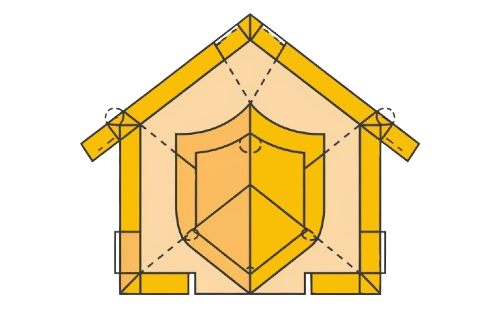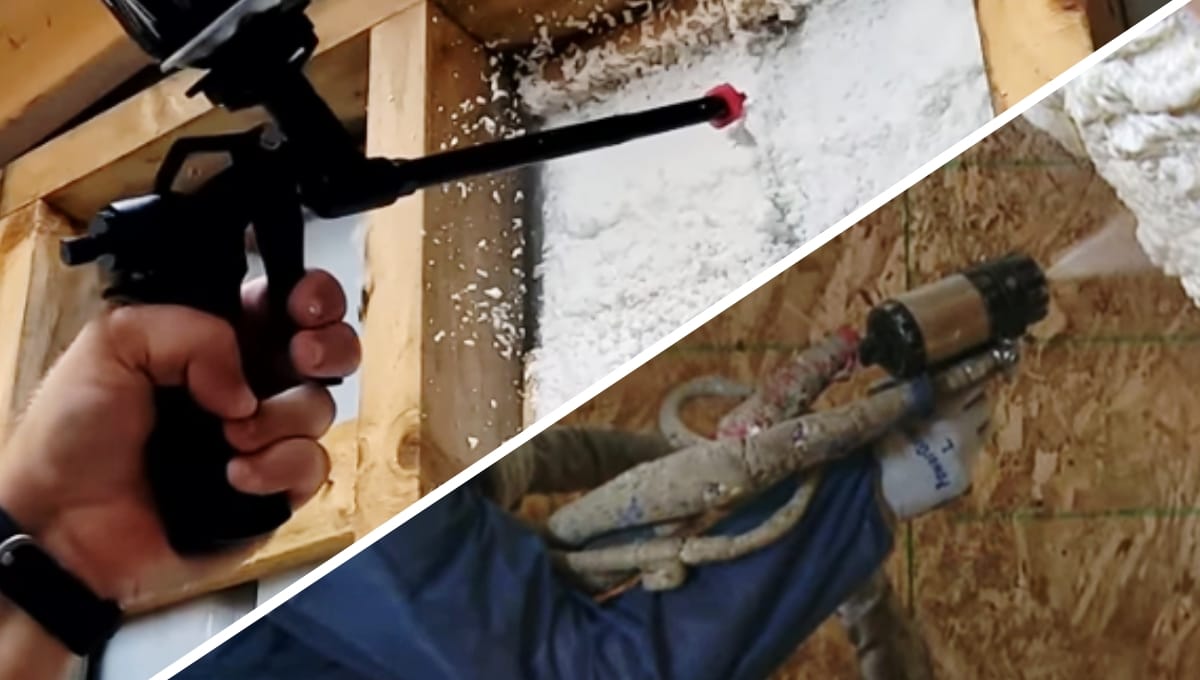When it comes to updating the insulation in your home, there are several things to consider. If you notice any signs or symptoms that suggest your insulation might be failing—like higher energy bills or uneven temperatures—it’s time to take action. You might be thinking about whether to install spray foam insulation yourself or to hire a professional contractor. This decision often boils down to a few key areas: cost, time, effectiveness, and the scope of the project.
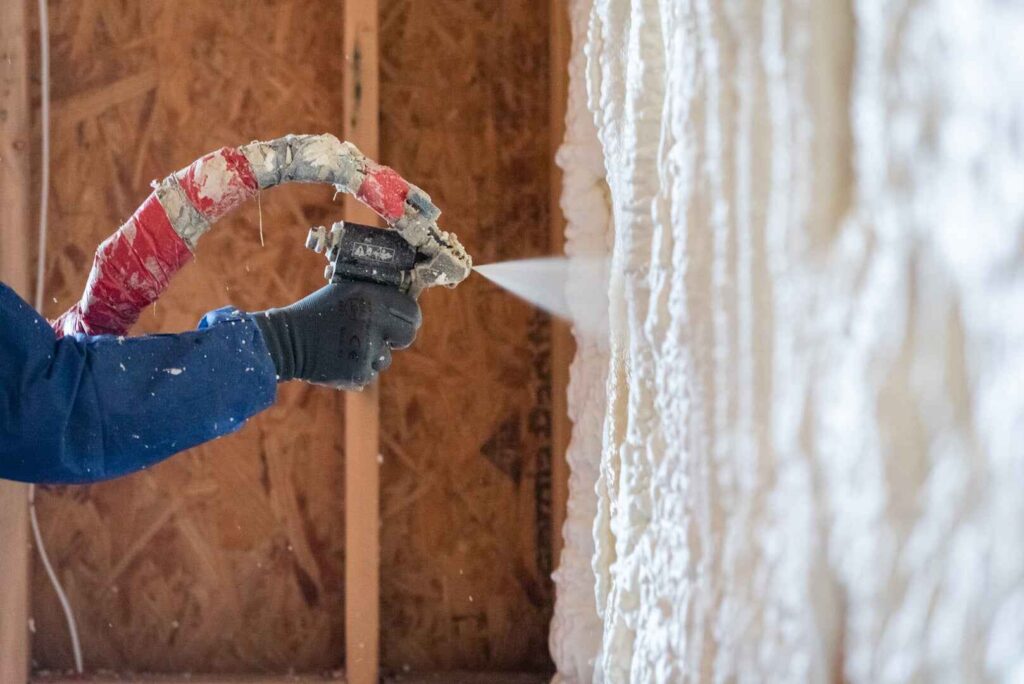
DIY vs. Professional Spray Foam Insulation: Weighing the Option
Doing a DIY project can be very rewarding, offering pride in your workmanship and the potential for saving money. It is feasible for handy homeowners who are dealing with small spaces or just patching up. However, DIY projects often require you to research your options and learn about the product you will be using. If you’re not ready to invest that time or admit it’s too much to handle, the DIY route might not be for you. Moreover, without the right tools and experience, you could risk improper installation, which impacts the effectiveness of your insulation.
On the other hand, hiring an experienced contractor can ensure that your insulation is installed correctly and efficiently. Professionals bring the right tools and skills, making them a better investment for large-scale projects or homes with complex layouts. They understand how to manage the foam application precisely, avoiding the risks associated with off-ratio mixes and ensuring that the foam cures properly for optimal performance. Although it may cost more, the professional approach often delivers a better product in the long run, especially in terms of safety and energy efficiency.
Cost Comparison: DIY vs. Professional Spray Foam Installation
When considering whether to choose DIY or professional spray foam insulation, the cost is a significant factor. Many believe DIY can be less expensive due to avoiding labor costs. However, when you examine the details, the decision isn’t always straightforward. The cost of spray foam can be high, and while installing it yourself might seem like a good way to save money, there are three key areas to consider: raw material costs, labor costs, and unforeseen costs.
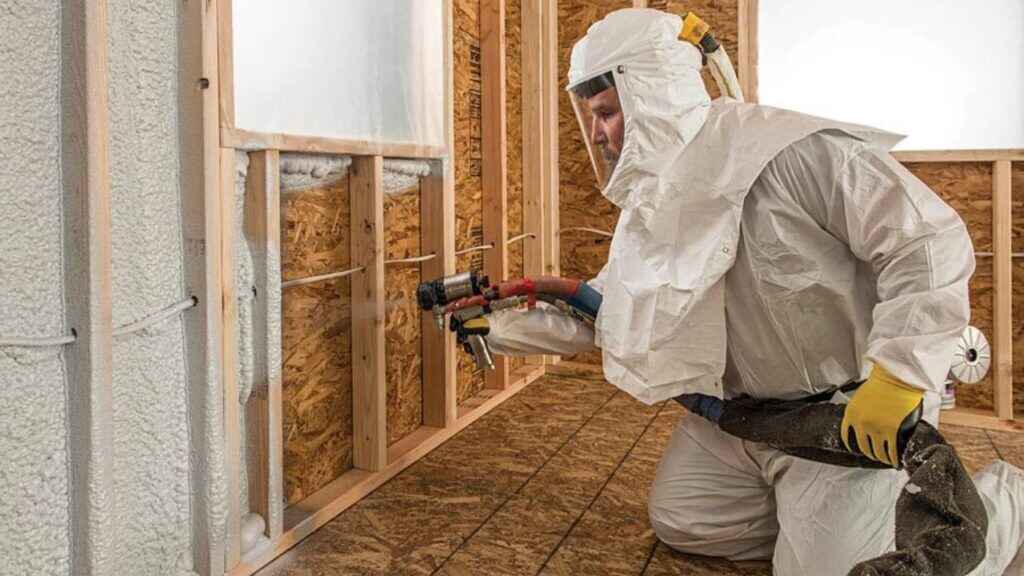
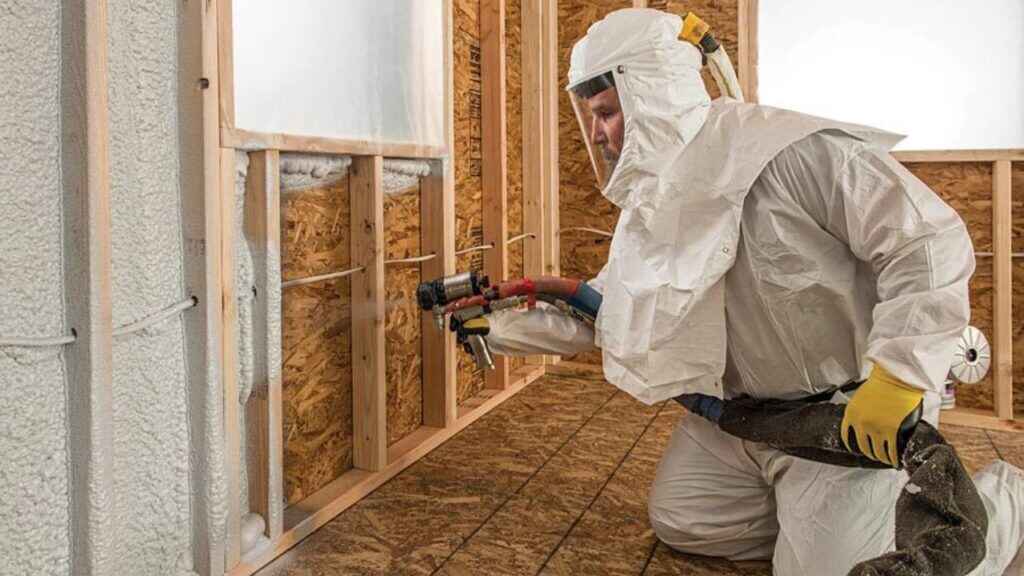
Comparing raw material costs shows that DIY kits and the materials used by professional contractors often cost about the same. The price of a DIY kit depends on the size of the kit and whether it is on sale, whereas rates for materials used by contractors can vary. This variability means that sometimes, you won’t save as much on materials as you might expect.
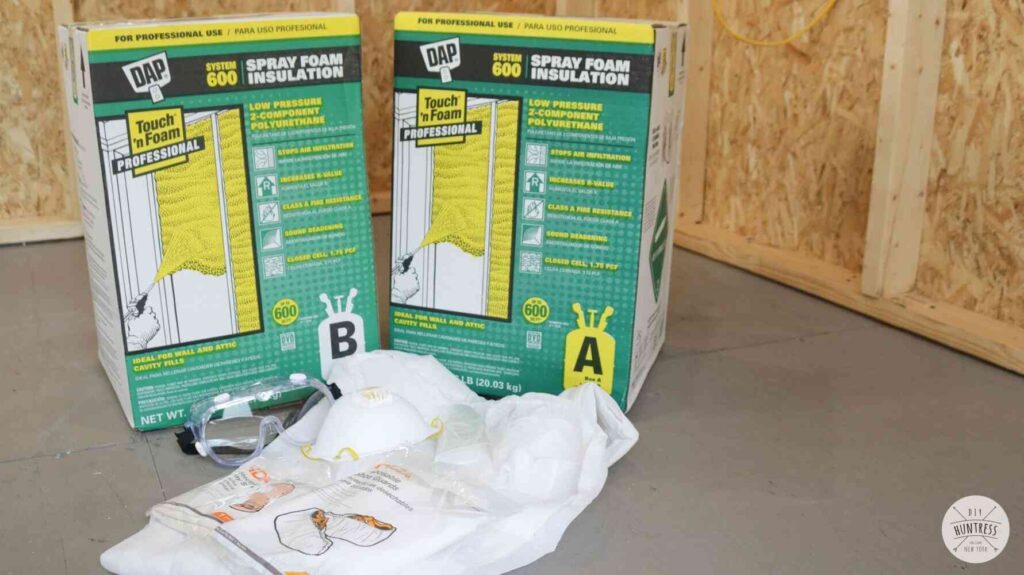
Furthermore, while you may not pay for labor when doing it yourself, the potential for unforeseen costs can quickly add up. Mistakes due to inexperience can lead to the need for additional materials or even hiring a professional to fix errors, which increases the overall expense. In contrast, hiring a professional contractor often means paying more upfront but can be more affordable in the long run due to better quality installation and fewer unforeseen costs. This makes professional installation often seem like the more economical choice, especially for those not skilled in insulation installation.
Exploring the Labor Costs of DIY vs. Professional Spray Foam Installation
Initially, DIY spray foam seems less expensive due to the absence of labor costs. However, considering the total cost over time, including potential errors and the need for reinstallation, DIY might not always be the more cost-effective option.
Labor costs are a significant factor when hiring professionals. These costs often depend on the size of the project. For small projects, a DIY approach can be economical as professional contractors may have a minimum project cost, which could include travel, labor, and equipment usage, which incurs fixed costs no matter the job size. On the other hand, a large area needing multiple kits could increase the material costs and complexity, making the DIY approach less feasible.
As a general rule, if the project requires only one DIY spray foam kit, you may see cost savings by doing it yourself compared to hiring a professional. But for larger jobs requiring more than two or three kits, the complexity and potential for costly mistakes increase. In such cases, it is worth considering contacting a professional contractor who can manage these challenges efficiently and perhaps offer more cost-effective solutions given their expertise and access to better prices on materials due to bulk buying and industry connections.
Cost Analysis: Hidden Expenses in DIY vs. Professional Insulation
When choosing between DIY spray foam kits and hiring a professional contractor, it’s crucial to account for unforeseen costs. While DIY kits might seem cheaper, they often do not include all the equipment necessary for safe installation. For example, a typical kit will provide installation equipment but no personal protective equipment (PPE). Safety glasses, gloves, disposable coveralls, and especially a respirator with the correct cartridge are essential for handling chemicals safely, and if you don’t already own these, the additional cost to purchase them can exceed $100. Professional contractors, on the other hand, will disclose all costs associated with the project upfront, and their quotes generally cover all necessary tools and safety equipment, making budgeting more predictable and often preventing last-minute expenses.
Time Commitment: DIY vs. Professional Installation
When considering whether to install spray foam insulation yourself or hire a professional, the time investment required is a critical factor. For DIY enthusiasts, the process involves significant passive time spent on research and learning the correct calculation techniques before even beginning the physical activity of installation. This upfront investment can extend the duration of the project, especially for those new to the process. On the other hand, professional contractors are well-versed in the nuances of installation, allowing them to complete jobs efficiently without the incremental delays associated with learning and preparation. Typically, professionals can manage even complex home upgrades or installations in a fraction of the time it would take a novice, making it a less frustrating option for homeowners who prefer quick and reliable results. This makes hiring a professional often the faster method, especially in scenarios where time constraints are tight or the project scale is large.
Evaluating Time Investment: DIY or Professional Installation?
When deciding between DIY spray foam installation and hiring a professional contractor, understanding the time required for each method is crucial. For DIY, the time commitment goes beyond just the application; it includes passive time spent researching the right options and selecting the right kit. This preparatory stage is vital, as it ensures that you are fully prepared to take measurements, perform calculations, and physically install the foam correctly. In contrast, a professional will likely spend less time overall, as their experience allows them to quickly assess the project and install the foam efficiently. The active time a professional needs can vary depending on the project type, but they generally complete jobs in a shorter time frame compared to DIY enthusiasts. For instance, hiring a professional to reinsulate an attic might initially seem costlier, but the speed and efficiency they bring can lead to overall cost savings, especially when they remove existing insulation and prepare the space swiftly before installation.
Assessing Product Quality: DIY Kits vs. Professional Application
Raw Material Quality:
When comparing the quality of DIY spray foam kits to professional spray foam applications, it’s essential to understand that the raw materials used in both are often of the same quality. Both DIY kits and professional-grade foams typically use similar chemical components with the same chemical makeup, ensuring that the base quality is universally consistent. However, the real difference lies in the application and long-term performance of the finished product. Professional installations tend to be more reliable due to better equipment and refined techniques, which ensure an even and effective application.
While DIY kits provide the flexibility to apply foam yourself and can be cost-effective for small projects, achieving a uniformly high-quality result requires precision and experience. In this regard, professionals are likely to deliver a better outcome, especially in complex installations, because they are trained to handle the intricacies of foam application and environmental factors that might affect the curing and performance of the insulation.
Quality of Finished Product: DIY Kits vs. Professional Installation
Spray foam insulation is often likened to a science experiment, where variables such as temperature, pressure, and ratio critically influence the outcome. DIY spray foam kits, while offering the basic equipment necessary to create spray foam, often fall short in their ability to maintain and monitor these variables during the chemical reaction. This limitation can alter the quality of the finished product, making it less consistent compared to professional installations. Professional contractors, on the other hand, use advanced spray foam rigs—costing anywhere from $60,000 to $100,000—equipped to precisely control these conditions. This high-end equipment not only keeps the variables in check but also optimizes them to ensure a consistent, high-quality foam. While both methods may start with the same raw chemical components, the superior technology and technique used by professionals mean that the finished product they produce is generally of a higher caliber than that of DIY kits.
Understanding the Health Risks of DIY vs. Professional Spray Foam
When installing spray foam, there are two main health hazards you should know about: off-gassing fumes and off-ratio foam. Anyone considering DIY spray foam installation needs to be aware of these risks. Off-gassing occurs during the chemical reaction when the foam is applied, and the resulting fumes can be harmful if inhaled. Off-ratio foam happens when the mixture isn’t balanced correctly, leading to continuous off-gassing, which can be dangerous over time. DIY installers may not always have the proper equipment or knowledge to handle these issues, making it essential to be educated on how to avoid them. In contrast, professional installers are trained to manage these risks and use high-quality tools to ensure safety during the installation process.
Health Risks: Off-Gassing Fumes in Spray Foam Insulation
When spray foam undergoes a chemical reaction during installation, it creates a byproduct called off-gassing, which is a normal but potentially harmful part of the process. These fumes should not be inhaled, as they can be toxic. Foam installers, whether DIY or professional, must wear personal protective equipment (PPE) to avoid inhaling these toxic fumes. Professional contractors are well-prepared, ensuring that all residents and pets vacate the premises during the installation to avoid exposure. If you choose the DIY route, you will be the installer and must invest in appropriate PPE to protect yourself, including a respirator with the correct cartridge, full disposable coveralls, gloves, and eye protection. While DIY spray foam kits often do not come with this essential equipment, it is critical for your safety.
Risks of Off-Ratio Foam in DIY and Professional Installations
Off-ratio foam is a type of failed spray foam insulation that is one of the most dangerous outcomes because it leads to continuous off-gassing. This occurs when the chemical reaction does not complete properly, leaving some of the foam in its raw state, which can off-gas indefinitely. While a properly applied foam will stop releasing gas when the chemical reaction is complete, off-ratio foam can be harmful long-term. Professional contractors are trained to recognize and remove it, as it is often the result of an equipment malfunction. In contrast, the rudimentary equipment in DIY spray foam kits makes it more likely for the foam to go off-ratio, and many homeowners may not be able to identify the signs of this failure due to their lack of familiarity with the process.
Advantages and Disadvantages of DIY Spray Foam Insulation
Advantages of DIY Spray Foam
- Perfect for small areas like around doors and windows.
- Ideal for small projects where DIY foam insulation works well.
- Experienced homeowners can avoid a contractor’s minimum charge by completing small spaces themselves.
- You can buy the kit from a local home improvement store and get the job done on your own time.
- You won’t have to wait on anyone, but it’s important to take the time to learn how the kit works properly.
Disadvantages of DIY Spray Foam Insulation
- One problem with DIY spray foam kits is that the application can go wrong even before it leaves the gun. If the canisters aren’t hooked up properly, the mixture can be ruined inside the tanks.
- Problems like a backup in the hose or gun can ruin the remaining material in the tanks, leading to additional costs.
- You need to know what you’re doing when using a DIY foam insulation kit. A pause longer than 30 seconds can cause the nozzle to clog, and if not swapped out under 30 seconds, the clog can spread into the hose and tanks, ruining the rest of the product.
- Foam needs to be mixed correctly to stick properly. If not, it can fall away from surfaces or not adhere if the surface is wet or not prepared.
- DIY spray foam kits are hard to control, especially for first-time users, making it difficult to predict how the foam will react and expand as it starts curing. Over-applying can lead to wasted product and wasted money.
- DIY kits won’t work for enclosed walls, and the only solution is to call an insulation professional. It’s also not recommended to use DIY kits for open wall cavities unless you have experience with them.
Advantages and Disadvantages of Professional Spray Foam Insulation
Hiring a foam insulation contractor may cost more than doing the work yourself, but there are times when calling a professional will actually save time and money on your insulation project. While DIY may seem cheaper at first, professionals bring expertise and equipment that can prevent costly mistakes. You need to own up to the fact that some projects are better left to experts, especially when the scope of work is large or complex. In the long run, using a professional contractor ensures the job is done efficiently, reducing the chance of errors and future repairs.
Benefits of Hiring a Professional Insulation Contractor
- Professional contractors can insulate hard-to-reach areas of your home, like existing enclosed walls, without tearing down drywall.
- Contractors can handle jobs of all sizes, including large spray foam projects that are very difficult for a DIY project.
- The amount of time needed to insulate your home is drastically cut down when hiring a professional, compared to doing it yourself.
- A good contractor will carry a license and insurance, ensuring that if anything were to happen, they can take care of it.
- An experienced contractor can remove and dispose of existing insulation in difficult areas like the attic, crawl space, or rim joist.
- A good insulation contractor will understand current building codes, energy efficiency codes, and possible rebates. They also know how to identify structural issues, mold, mildew, and animal infestation signs.
Drawbacks of Hiring a Professional Insulation Contractor
- Hiring a professional can be more expensive than a DIY project if everything goes off without a hitch and there is no misuse of any products.
- You need to do your due diligence to make sure you hire a contractor you can trust and who is experienced.
- You don’t want to find out the hard way that the contractor isn’t qualified, which could lead to issues later on.
- You may have to wait for several weeks in some cases to get on the contractor’s installation schedule.
Deciding Between DIY and Professional Installation for Your Project
If your job is really small, hiring an insulation contractor may not always be necessary. DIY spray foam kits can be a simple solution for capable homeowners handling small projects. However, as the scale of a project increases, so does the potential for disaster when using a DIY spray foam kit. The most significant drawback of DIY kits is the lack of equipment, including missing PPE and cheap application tools, which can lead to serious mistakes. You’re likely thinking about the safety, longevity, and effectiveness of your insulation, and if your project requires more than a single DIY kit, it’s probably best to contact a professional contractor for a quote.
Hiring a professional contractor can make sense when looking to improve your home’s comfort and energy efficiency over the long-term. A qualified, licensed contractor is preferred for larger projects to avoid potential risks and ensure the insulation is applied correctly. While some homeowners are handy, that may not be you, and there’s no shame in that. To save yourself time, stress, and even money if things go wrong, hiring a professional is often your best bet. With a professional, your insulation is insured, installed with premium equipment, and the variables in the chemical reaction are managed carefully to deliver the best result.
Final Thoughts
In summary, choosing between DIY and professional spray foam insulation depends on your comfort level with the tasks involved, the size of the project, and how price-conscious you are. Each method has its place, and the best choice will depend on your specific needs and abilities. Remember, while one method might save you money upfront, the other could provide a more effective solution and long-term savings. Contact us today to connect with experienced professionals to ensure your spray foam insulation is applied with precision.
FAQ
Is It Worth It to DIY Spray Foam Insulation?
If you really want to tackle spray foam insulation yourself, DIY kits are good for small jobs, but as the project gets bigger, the cost quickly becomes higher. You can use Great Stuff, but for a whole house, the cost may be several times as much as traditional insulation. A pro might be more effective because when you hire, you pay for skill, avoiding costly mistakes.
Why Is DIY Spray Foam So Expensive?
The spray foam insulation process is expensive due to several factors. Unlike traditional methods, it requires high-quality materials, specialized equipment, and skilled expertise for proper installation. These must be used and applied properly, making DIY more difficult without the right knowledge.
Can You Save Money by Doing Your Own Spray Foam Insulation?
Going DIY with spray foam may seem like a great way to save money, but the total cost depends on the project size. While kits can reduce labor costs, a professional brings expertise that ensures the job is done right. If mistakes happen, you may end up paying more, making hiring a skilled expert the same or even cheaper in the long run.
Can a Homeowner Do Spray Foam Insulation?
Yes, spray foam insulation can be used in residential and commercial properties. This versatile material can be applied in various settings, but proper technique is key for the best results.
